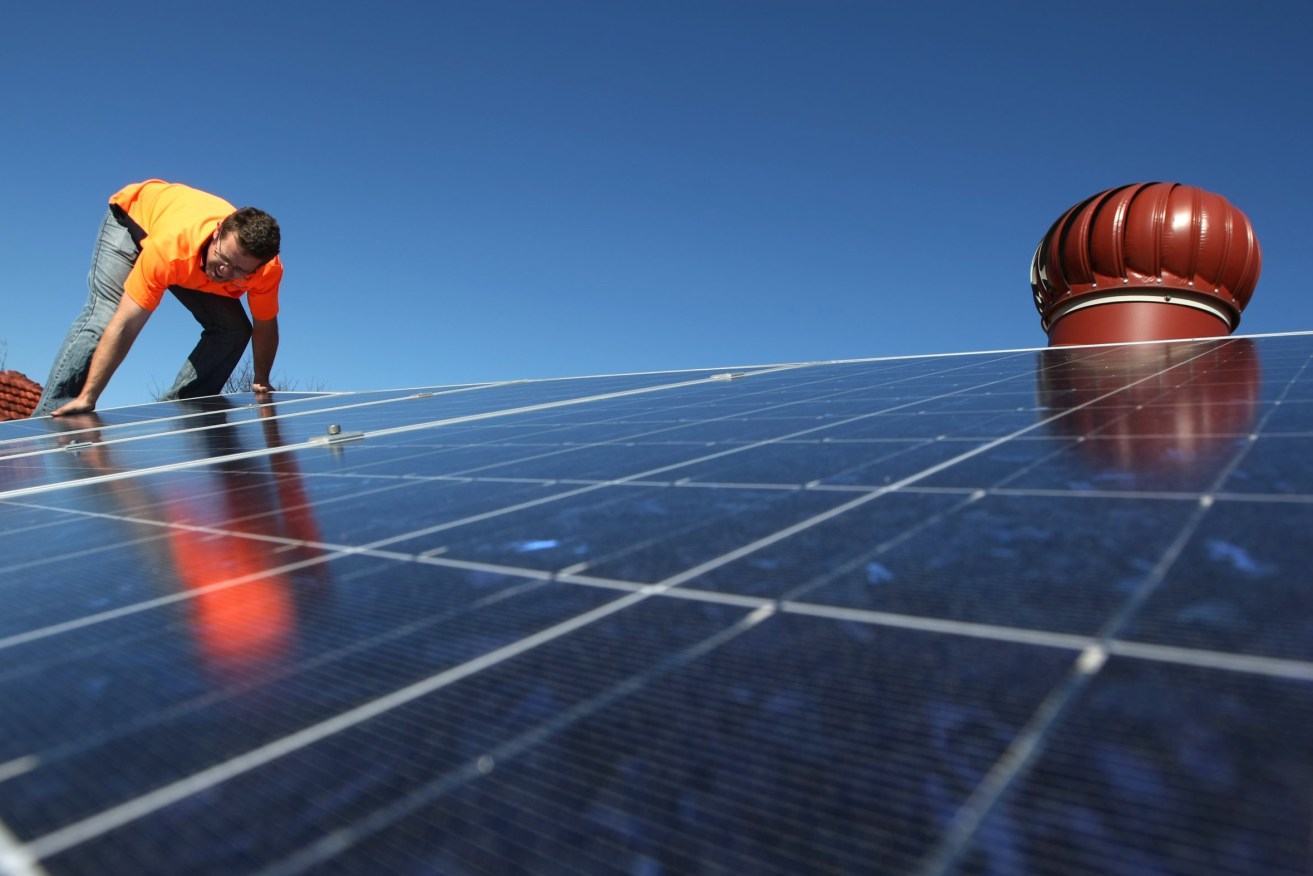SA hits new record running on 100 per cent renewables
SA hit a world-leading stretch of operating on 100 per cent renewable energy over summer, with Trade Minister Nick Champion heading to Singapore and Japan to lure more investment for the sector.


Photo: Reuters/Tim Wimborne
Latest data shows solar and wind energy accounted for 80 per cent of the state’s electricity from December 1 to February 28, including the 10-day stint where the state used 100 per cent green energy.
Energy Minister Tom Koutsantonis said on most days in SA there were now periods when renewables generated more than enough electricity to meet 100 per cent of the state’s consumption, with the excess exported to Victoria.
“These periods often stretch to 24 hours or more, and we have seen world-leading results, such as from December 9 to 19 last year, when renewables averaged above 100 per cent over the entire ten days,” he said.
South Australia’s record-breaking run on its renewables saw wind and solar contributing just over 85 per cent of the state’s electricity demand over December, surpassing the state’s previous record of 76 per cent set in December 2021.
Trade and Investment Minister Nick Champion intends spruiking the state’s renewable energy credentials to potential hydrogen investors who can boost the level even higher, when he leaves for a trade mission to Japan and Singapore on the weekend.
He will lead a contingent of SA companies to attend one of the world’s largest renewable energy events, Tokyo’s Fuel Cell Expo next week, and host a hydrogen and renewable energy round table.
The global hydrogen event attracts 50,000 visitors and Champion is keen to meet with potential investors like Japanese company Marubeni, saying it’s important to back up last years’ trade mission to Japan and South Korea to “put yourself on the map”.
In February, work started on a joint $12.5 million hydrogen project based at Bolivar in northern Adelaide that is funded by Japan’s Ministry of the Environment and Marubeni.
The hydrogen plant is expected to be operational by August this year, with the first hydrogen exported in a metal hydride container from SA to Indonesia. Its battery energy storage system is also expected to contribute energy to the local grid.
A government spokesperson said a “request for proposal” for the state’s $593 million green hydrogen power station, electrolyser, and storage facility, earmarked for a spot near Whyalla, also went to market in December.
The contract is expected to be signed by the end of this year and the plant and storage facility built by the end of 2025.
“Our state’s world-leading wind and solar resources position us at the centre of the global hydrogen opportunity and provide a competitive edge in the race to supply clean, green, renewable energy to the world,” the spokesperson said.
SA has managed to shift from below one per cent renewables in its energy production 15 years ago to last year’s almost 70 per cent yearly average using wind, solar, battery storage and gas.
Among the mix are three solar farms operating across the state, Bungala Solar Farms one and two near Port Augusta, Tailem Bend solar stage one and the Adelaide Desal Plant.
Others under construction are the Port Augusta Renewable Energy Park and Goyder South Hybrid Renewable Power Station, while more projects are in the pipelines.
Extensive roof top solar panels are also now producing more than 1,300 megawatts of green electricity, according to the government spokesperson, more than the capacity of the Torrens Island Power Station at 1,280 MW.
Champion said the state needs to “bolster and build” on its leading renewable energy status, and is travelling with the new head of Invest SA Chris Wood who had worked with Austrade and previously ran his own business in Japan.
“Singapore and Japan are two of the biggest players in a global market – and we need to ensure our state is capitalising on the significant growth and investment opportunities they present,” Champion said, who last year joined Malinauskas and Koutsantonis on a five-day trade mission.
They met more than 150 different officials from some of the biggest companies in Japan and Korea along with key investors involved in hydrogen, renewable energy, resources, wine and tourism.
This trip, Champion will also be spruiking the state’s wine and food.
Japan is the state’s seventh largest export market and worth $647 million in the 12 months to January with growth sectors including canola, seafood, meat and wine.
Singapore is the state’s 20th largest export market worth $253 million to January with growth sectors including wheat, barley, dairy and copper.




